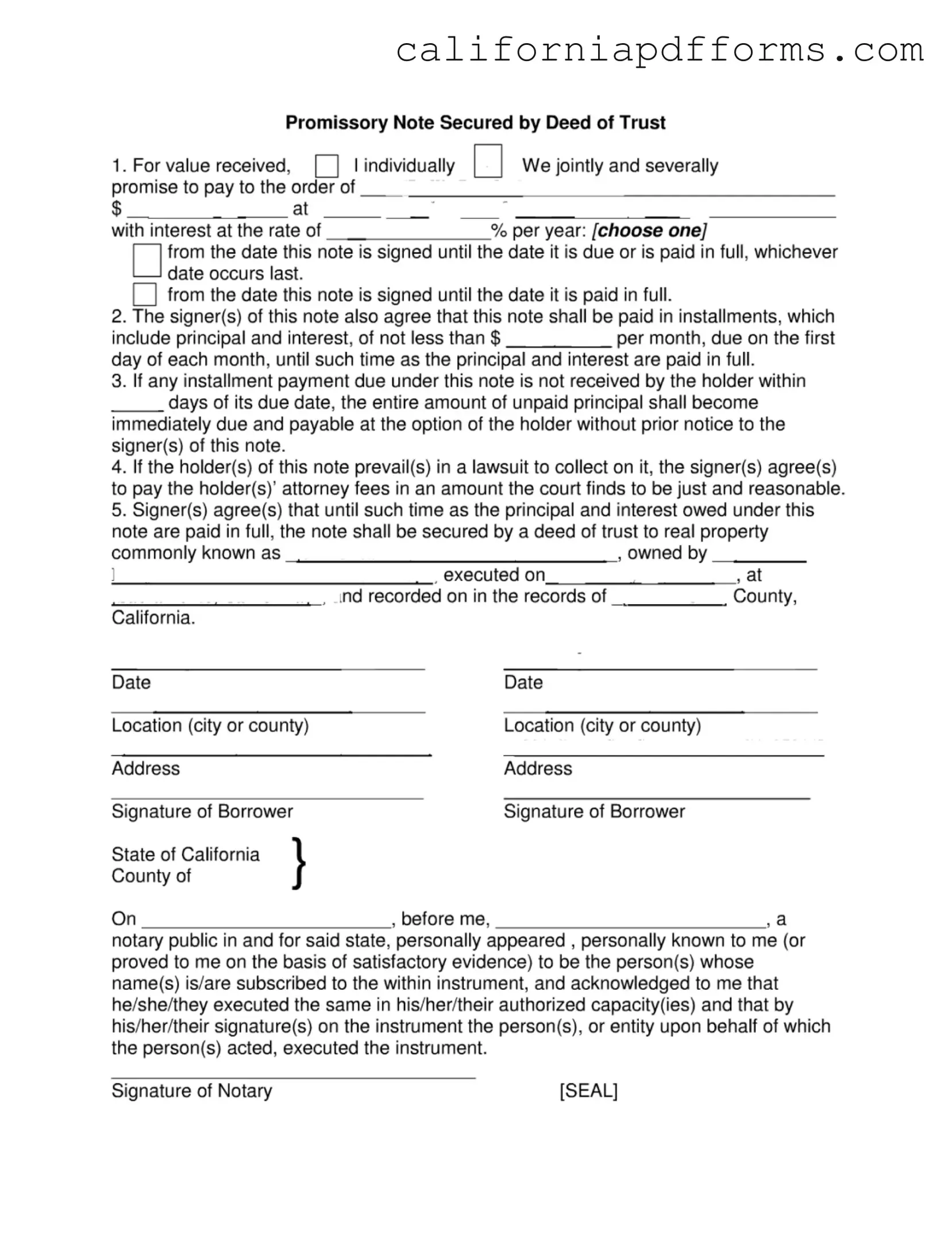The California Note Secured form is a legal document that outlines a promissory note secured by a deed of trust. This document is used when a borrower agrees to pay back a loan, with the loan being secured by real property. It details the terms of repayment, including the amount borrowed, interest rates, and payment schedule.
Both individuals and entities can sign the California Note Secured form. If multiple parties are involved, they can be jointly and severally liable, meaning each party is responsible for the entire amount of the loan. This allows the lender to seek repayment from any one of the borrowers if the others default.
The form requires specific details, including:
-
The names of the borrower(s).
-
The amount of money being borrowed.
-
The interest rate.
-
The payment schedule, including the amount of each installment.
-
The property being used as collateral.
Accurate information is crucial to ensure the enforceability of the note.
What happens if a payment is missed?
If a borrower fails to make a payment within the specified grace period, the lender has the option to declare the entire unpaid principal amount due immediately. This means that all outstanding amounts become payable without prior notice to the borrower, which can lead to serious financial consequences.
Can the terms of the note be modified?
Yes, the terms of the note can be modified, but such changes typically require mutual consent from both the borrower and the lender. It is advisable to document any modifications in writing to avoid disputes later on.
What is a deed of trust?
A deed of trust is a legal document that secures a loan by using real property as collateral. In the event of default, the lender can initiate foreclosure proceedings to recover the loan amount by selling the property. This provides the lender with a level of security for the loan.
Are attorney fees recoverable under this note?
Yes, if the lender prevails in a lawsuit to collect on the note, the borrower agrees to pay the lender's attorney fees. The amount awarded will be determined by the court based on what it finds to be just and reasonable.
Yes, notarization is required for the California Note Secured form. A notary public must witness the signing of the document to verify the identities of the signers and ensure that they are signing voluntarily. This adds a layer of authenticity to the document.
If you need assistance with the California Note Secured form, consider consulting with a legal professional. They can provide guidance on how to accurately complete the document and ensure that it meets all legal requirements.
Once the California Note Secured form is completed and signed, it is important to keep it in a safe place. Both the borrower and the lender should retain copies for their records. This ensures that both parties have access to the terms and conditions agreed upon.
